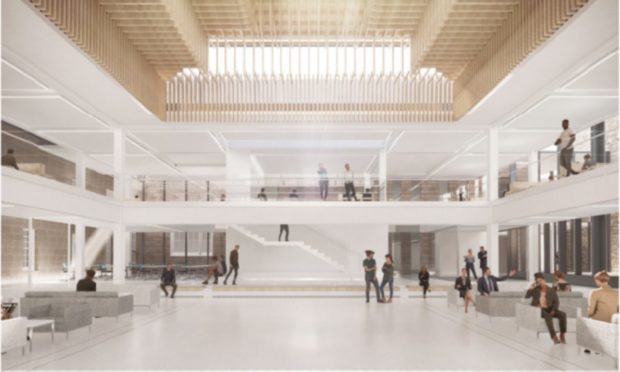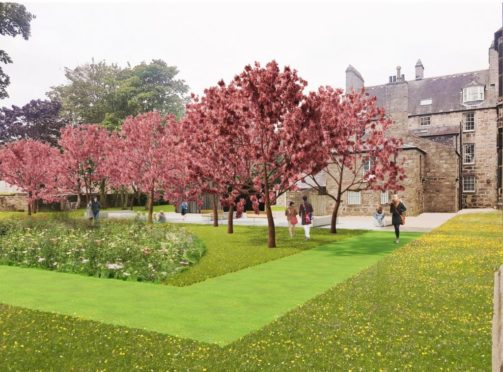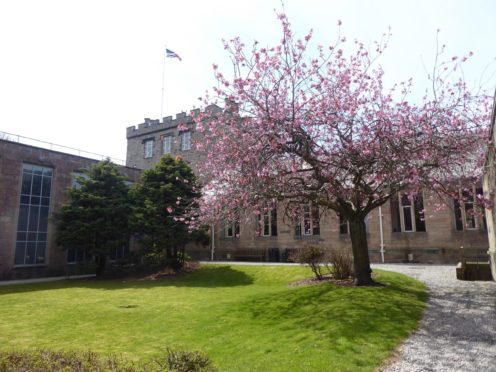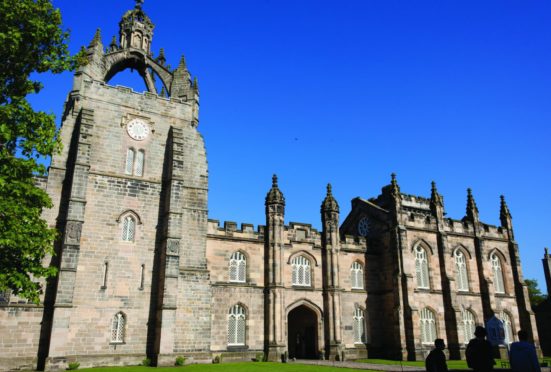Plans to modernise one of Aberdeen University’s most historic and recognisable sites have been given the green light by the local authority.
The ambitious project, approved by Aberdeen City Council’s planning committee, will transform the King’s Quarter, which forms part of the oldest section of the campus.
They involve the construction of a new flagship atrium, the demolition of parts of existing buildings, and the creation of a central forum space, all centred on the King’s College North Courtyard – also known as the O’Dell Courtyard.
The university has said the available space in the area is currently underused, and the new development will “revive redundant buildings in the heart of the campus”.
However, it is not without controversy, and the application attracted dozens of objections.
An ‘insensitive proposal for a highly sensitive site’
Objectors included a number of academics, as well as the Scottish Civic Trust and the Old Aberdeen Heritage Society, which said: “Never before, in the 35 years of the society’s existence, have we been presented with such an insensitive proposal for such a highly sensitive site.”
The development’s critics have described the design of the new teaching and learning Hall as “inappropriate” and not “in keeping” with the surrounding area, and disapproved of the loss of a memorial garden to Andrew O’Dell, the university’s first professor of geography, who died suddenly in 1966.
The ashes of three former university students have also been scattered in the garden.
A report earlier this month from the council’s planning development management committee said: “While people have raised concern that the memorial garden could be lost, we note that the memorial has remained in place for some 54 years and that a memorial should rarely be considered sacrosanct for all time.”
The report adds that the university “will endeavour to contact” the families of the three individuals whose ashes are scattered there.
An assessment from Historic Environment Scotland in December last year focused on the iconic King’s College Chapel, which dates to the late 15th century, advancing the view that its setting would not be “unduly disturbed” by the new development.
However, planning chiefs recommended the project for approval and said the sensitivity of the site had been fully considered.
“The proposal represents a carefully considered intervention in the historic environment which would enable underused listed buildings to be brought back into use and enable the university to provide modern, flexible and efficient space.
“The King’s College group of buildings have continuously evolved over time and for them to remain relevant and in productive use, appropriately considered change continues to be required.”
Delight that ‘transformational’ project approved
The approval marks a milestone in the university’s multi-million-pound plans for the King’s College campus, which include the relocation of the business school and the creation of a new science teaching hub.
Professor Alan Speight, the vice principal of global student recruitment who leads on the King’s Quarter and Johnston Halls redevelopment plans, called the project “transformational”.
He added: “These new spaces will provide a modern, adaptable, high quality teaching environment for undergraduate and postgraduate students that will be ideally suited to working across academic disciplines, in line with the interdisciplinary aims of our Aberdeen 2040 strategy.
“I am pleased that in their recommendation to the planning committee, the planning officers noted our careful consideration of the historic environment to enable underused listed buildings to be brought back into productive use, which reflects the detailed work we have undertaken on the proposals over the past two years.”
Principal Professor George Boyne said: “With work on our new science teaching hub well advanced, and planning approval now granted on both our King’s Quarter and Business School developments, we are making significant progress towards meeting the needs of modern students with contemporary, adaptable and technology-ready facilities that will continue to attract the best and brightest to Aberdeen.”



